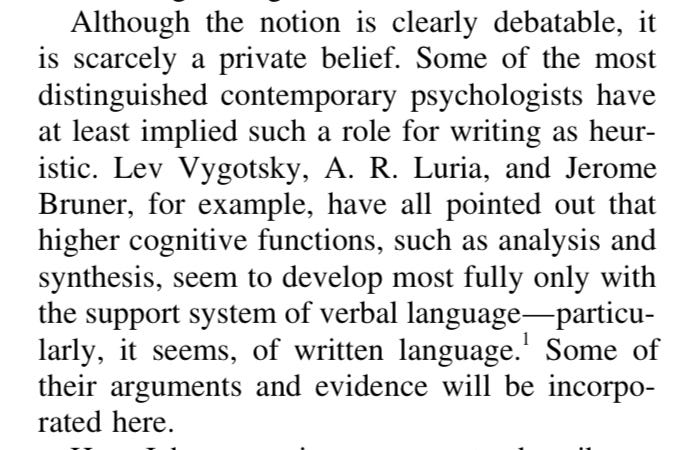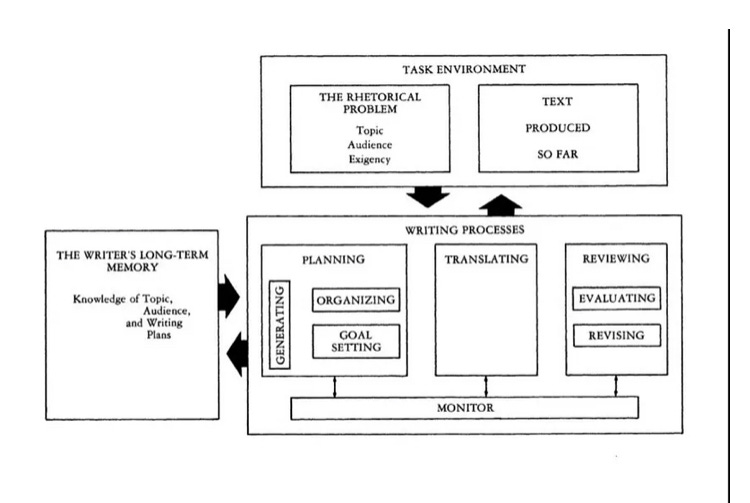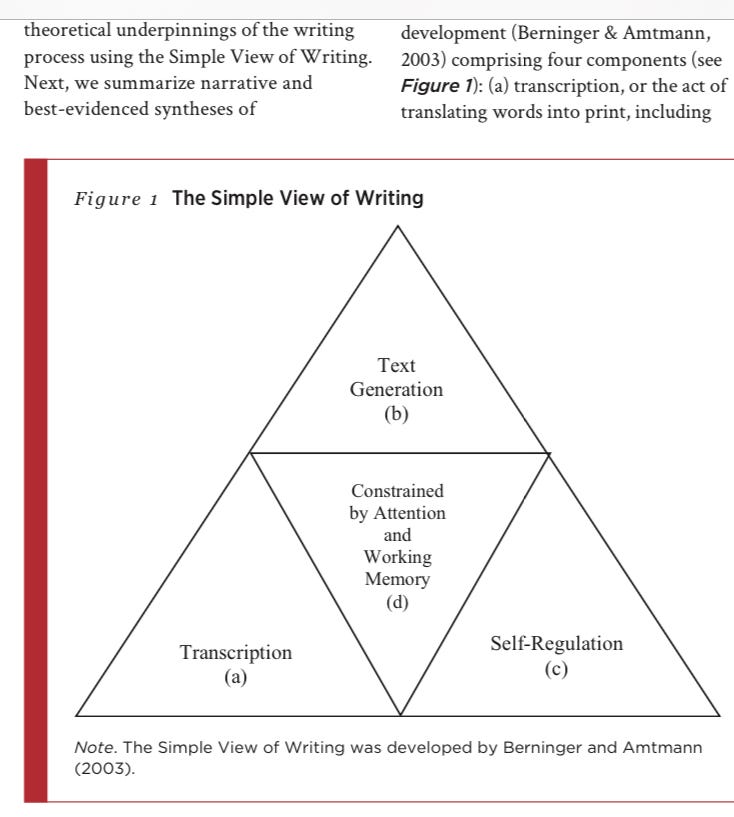A View of Writing through the Wrong End of a Telescope
Theories of writing as a process emerged in the 1970s in response to an entrenched tradition of viewing writing as a product. What counted was the finished piece. How authors shape pieces of writing from thin air, what happens physically and cognitively, was simply not on the scholarly radar.1
Teachers who taught writing as a product must have believed that the way a finished text came about was through a sort of cognitive dictation. A voice in the head told the writer what words to put down; the writer then did the spelling. If problems appeared in the written product, a teacher’s pointing them out in red ink would send a signal to the voice in the head to get its act together.
In 1972, Donald Murray, who taught writing by holding individual conferences with his students in his office as they worked on writing projects, published a piece titled “Teach Writing as a Process Not as a Product” grounded in his experiences. The title and the spirit of the piece motivated scientific research into the activities of the writer during the making of a product over the next few decades.
Janet Emig’s “Writing as a Mode of Learning” (1977) turned the tables on the simple view of writing. Indeed, argued Emig, writing is not only not a simple matter of the the orthographic processor taking dictation from the mind’s voice; the act of writing is an act of learning:
Nancy Somer’s “Revision Strategies of Student Writers and Experienced Adult Writers” (1980) took issue with the linear model of the writing process that was emerging pedagogically wherein thinking comes first, drafting next followed by revision, and then polishing for publication. Somers discerned an uncomfortable sameness between speaking and writing in the linear model that made revision a logical impossibility. Speech comes directly from the brain in the moment and cannot be revised; what gets said gets said, and revision cannot change it. Writing isn’t that way:
Sondra Perl’s “Understanding Composing” (1980) uncovered yet another way in which writing calls upon cognition to do very different work from cognitive engagement during speech acts. Perl discussed “projective structuring” by which writers conjure up a possible reader and assess potential needs of the reader as the flow of ideas firms up into an intention that shapes text-to-come. This kind of cognition is much more complex than a simple linear voice-in-the-head dictation model implies.
Flower and Hayes (1980) published a full blown cognitive model of writing activity which hinted at the role of sociocultural as well as psycholinguistic factors that map a complex of mental moves involving drafting, pausing, rereading, revising, rethinking, and repurposing that would cause communicative paralysis if they were needed for linear, spontaneous speech in the moment:
By the 1980s cognitive models of writing became widespread in teacher preparation and pedagogy, and interest in direct assessment as well as portfolio assessment began to flourish. The function of peer response as a discursive tool in the writing classroom became an object of pedagogical research to expand the writer’s access to Perl’s projective structuring strategy and to authorize students to work as collaborative learners. Sociocultural theorists conducted empirical research on writing communities as motivating and sustaining aspects of writing instruction, and the stage was set to supercharge writing as a tool for learning.
Interestingly, the field of reading and the field of writing both were changed by the cognitive revolution to encompass learner as agents largely because these silent acts were coming to be understood as having different demands on thinking in contrast with acts of sounding and speaking. Yet today with the reemergence of a simple view of reading, a movement is afoot to erase research beginning with Donald Murray and return to a pre-scientific understanding of writing. Witness:
Gebhardt, Richard. "“Process and Intention”: A Thirtieth-Year Reflection." The Writing Instructor. December 2011. http://www.writinginstructor.com/30process (Accessed 2/23/2023).






